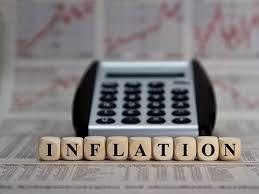WASHINGTON: US consumer prices increased solidly in December amid a surge in the cost of gasoline, though underlying inflation remained tame as the economy battled a raging COVID-19 pandemic that has weighed on the labour market and services industry.
Inflation could, however, briefly accelerate this year as the government provides more money to stimulate the economy, and the consumer price declines early in the coronavirus crisis wash out of the calculations.
But that will unlikely have an impact on the Federal Reserve, which has signaled it would tolerate higher prices after inflation persistently undershot the US central bank’s 2% target. The Fed has slashed interest rates to near zero and is pumping money into the economy through asset purchases.
Economists expect the ultra-easy monetary policy stance to last through at least until 2024.
The consumer price index increased 0.4% last month after gaining 0.2% in November, the Labor Department said on Wednesday. An 8.4% jump in gasoline prices accounted for more than 60% of the rise in the CPI. Food prices also rebounded. The rise in the CPI was in line with economists’ expectations.
In the 12 months through December, the CPI advanced 1.4% after increasing 1.2% in November. The annual inflation rate is below the 1.7% average over the last 10 years.
Excluding the volatile food and energy components, the CPI edged up 0.1% after climbing 0.2% in November. The so-called core CPI was restrained by decreases in the prices of used cars and trucks, recreation, airfares and healthcare.
The core CPI gained 1.6% on a year-on-year basis, matching November’s rise, and is below the 2.0% average over the past 10 years. The Fed tracks the core personal consumption expenditures (PCE) price index for its inflation target, a flexible average. The core PCE price index is at 1.4%.
The government approved nearly $900 billion in additional pandemic relief in late December. More fiscal stimulus is expected from President-elect Joe Biden’s incoming administration and a Congress that will soon be controlled by Democrats.
A survey this month showed a measure of prices paid by manufacturers jumped in December to a 2-1/2-year high, likely reflecting bottlenecks in the supply chain caused by the virus.
Gasoline prices rebounded 8.4% in December after two straight monthly decreases. Food prices rose 0.4%, with the cost of food consumed at home increasing 0.4%. Prices for food consumed away from home also rose 0.4%.
Owners’ equivalent rent of primary residence, which is what a homeowner would pay to rent or receive from renting a home, edged up 0.1% after being unchanged in November. Many tenants have entered into forbearance agreements with landlords.
Consumers continued to pay less for healthcare, with prices declining for a third straight month. Prices of used cars and trucks also fell for a third straight month. The cost of airline fares tumbled 2.3%, while hotel and motel accommodation prices were unchanged.
But prices for new motor vehicles rose 0.4%. Apparel prices shot up 1.4%. There were also increases in the prices of household furnishings, personal care products and motor vehicle insurance.





















Comments
Comments are closed.